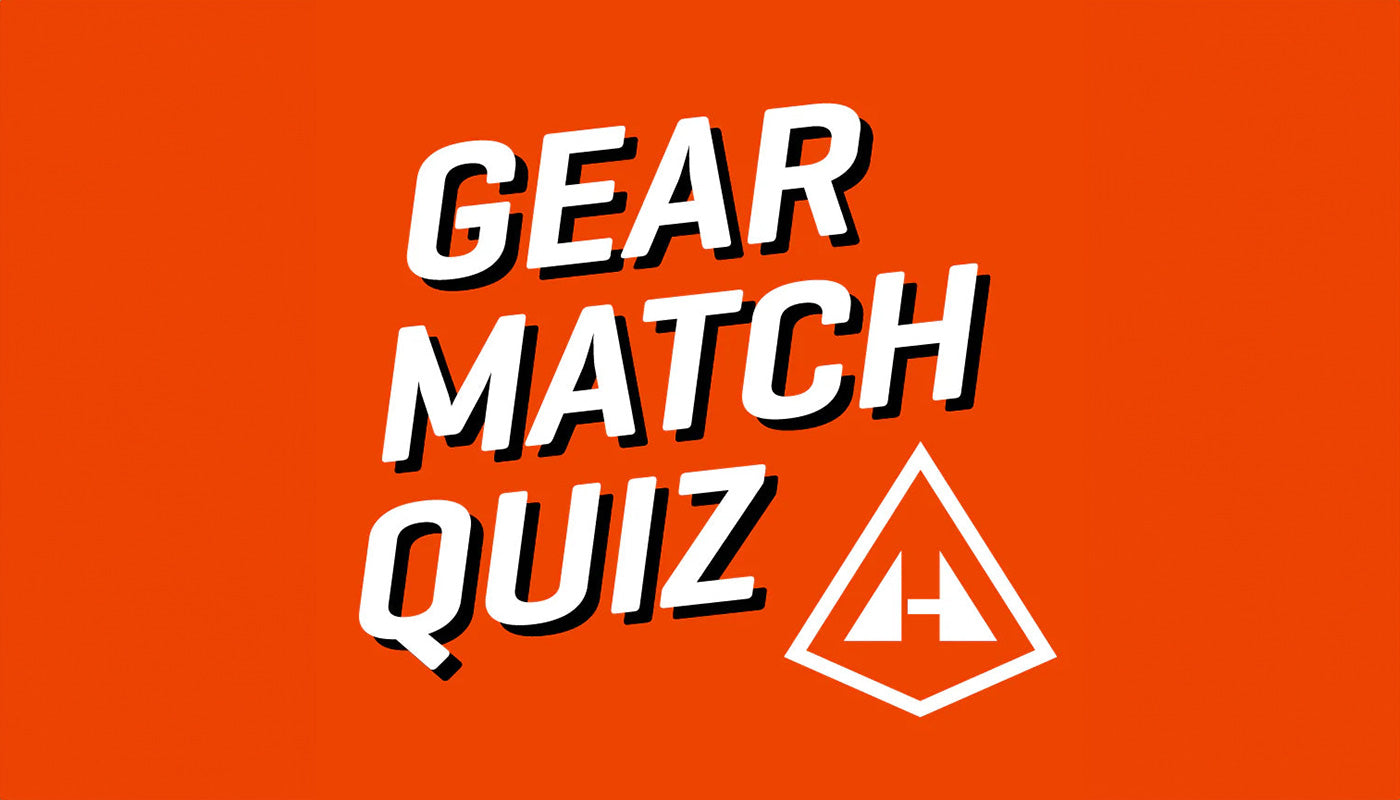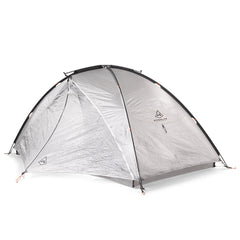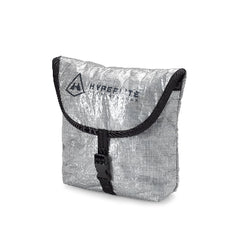Words, Photos, and Video from Garrett Martin
The adventure set in the thru hike community is known for its generosity and concern for its fellow backpackers. One gesture that demonstrates this beautifully is when one hiker offers to share their experience and wisdom by doing a "Shakedown" for another hiker. Having a kindred explorer's back can also mean taking some weight off it! Here, Garrett "Price Point" Martin, who, at the time of this post, was making his way up the Pacific Crest Trail with his wife "Honeybear!" shares an encounter they had with a cool couple that was open to reexamining their setup for the promise of lightening their load.
As a 30-year-old newlywed on the Pacific Crest Trail, I often wonder how much more juice my wife, Honeybear! (The exclamation is not a typo but an emphasis and part of the trail name) and I will be able to squeeze. After meeting on and completing the Appalachian Trail in 2018, we'd tried the domestic life over the past two years in a flat town and felt it suck away our souls–thus promoting another long romp across the country.
We've learned through our own experiences and research that getting our gear dialed in and not carrying more than we need enables us to do longer days and thus more miles, ultimately ensuring our success in our endeavors. We borrow a lot from the concept of ultralight popularized by Ray Jardine in the late nineties and early oughts. Unfortunately, lately, ultralight has at times turned into a competitive keyboard warrior battle about who's done the most research and has the best thesis about materials and blah blah, blah, blah–on it goes. Because of this, it gets a bad reputation and is often seen as "stupid light" to many Boy Scout Masters and traditional backpackers.

Ultimately, it's adopting a mentality about taking fewer items to decrease your weight and increase your time, mileage, and overall comfort while on trail. To challenge yourself to find multiple uses for one item, so you don't have to take two that do half the job of one. It prioritizes comfort while hiking instead of comfort in camp, which is necessary on something like a thru hike. I'm not even necessarily ultralight myself, but I am lightweight, and I know for a fact it makes for a better experience when compared to times I've had a heavy pack. I sleep in my hiking clothes, have one pair of underwear, eat cold beans and rice for lunch, and carry a two-dollar emergency poncho (in lieu of a rain jacket or Frog Toggs as they've ripped too many times and if it's sustained rain every jacket on the market eventually wets out or makes you sweat so much it doesn't matter). This is a comfort level I've worked to achieve and not something you yourself have to endure. I still carry an inflatable pad and pillow, though–I'm no masochist.
While out here on the PCT, I've been really inspired by everyone in their 60's and up as I ponder what growing old can and should look like. I lived in South Korea for a bit after college, and if you've ever been, you know they have a deeply rooted mountain culture where hiking and camping areas are mostly occupied by seniors. So, it was not uncommon for an older woman in her 60's to pass you going up a mountain. In America, however, sometimes it feels like we have an attitude of decay when it comes to aging.
The leaves of our salad days seem to wilt and whither into our golden years. We become too old to work but too young to die, and our burden to our family and society is swept under the rug into retirement homes and inevitable hospice beds. But I don't want that life. I want to walk solemnly and slowly into the woods when it's my time. Find my body in a tent with ramen remnants in my cold soak jar and dig one last cat hole the size of my body so the worms can turn me into food for the trees.

While heading into Vermillion Valley Resort (PCT mile 878.8), we passed an older couple with large packs that I assumed were on a section hike since we were in a popular area for weekend warriors and day hikers. I remember being impressed that the gentleman was wearing Altras with gaiters attached since that was typical thru-hiker garb, and how cute it was that he had made it that deep into research. Then, when we got to VVR, I overhead him say they had started in March and were going all the way. I was surprised and knew I had to sit down with them to hear some more of their story.
During our conversation, I was enamored to learn they lived in Denton, Texas, which was only 45 minutes up I-35 from where Honeybear! and I lived. Not only was it cool to learn they were from my area, but also–in case you don't know anything about North Texas–let's just say the felt on a billiards table has more elevation change than Denton. So, training for something like the PCT ultimately ends up walking on a sidewalk next to a river. As we sat and talked, I learned that Sam (SuperUber) and Kathy (Bruiser) were in their 70's and had completed the John Muir Trail (on the second attempt since the first resulted in some broken bones and bruised body for Kathy). They'd also done some sections of Washington and Oregon. To know that Honeybear! and I didn't have to just roll over and garden in retirement but could still get some time in on trail was very inspiring. After our interview, I asked them about their pack weight, and when they both stated about a 20-pound base weight, my heart sank. I proclaimed there was no reason people their age (or any age really) should be carrying that much weight around. I was convinced they had packed some fears. I asked if I could go over their gear with them, and luckily, they obliged.

The results of a previous shakedown Garrett gave to another hiker he met on trail.
When I offer shakedowns to other hikers, it is never a point of condescension but one of genuine concern for their success and enjoyment while on trail. I always assure other hikers it is a safe space free from judgments, and if I say they don't need something, it will ultimately be their decision if they choose to send the item home or not. I give them one rebuttal of the item, then counterpoint once, and if the first point isn't convincing enough, a second one probably wouldn't be either. So, I toss my hands and say, "That's fine; you can keep it." Sometimes my willing pupils are intimidated and insecure about their selections and have refused the service or try to convince me they're going to do it themselves, but this time around, Sam and Kathy trusted my advice.
For Sam, we got rid of:
A travel-size can of Barbosal shaving cream along with a Gillette swivel head razor complete with a five-head set. It showed, Sam was nearly three months in and clean-shaven. The math just doesn't add up.
Deodorant (We all stink in this town, Sam).
A fancy (and heavy) lighter that Sam assured me was useful because it ignited above 10,000 feet. Then I assured him it was extra weight because my Bic lighter had achieved the same thing. (He also had two additional Bic lighters that I later found in a ditty bag).
An entire bottle of Advil liquid gels. I convinced him to take ten and ditch the rest.
Two different GoPros and a big selfie stick (near trekking pole length) along with about 25 micro-SD cards and some other random assortment of electro stuff all contained in a large protective foam case. Sam was vlogging his experience and was concerned about one of the GoPros shorting out, so he carried a backup. That's fine, but he was also using a cellphone-based app called Kinemaster (which I also use) for his editing, so he had to transfer the files from GoPro to the phone. I explained how I used my phone to do everything, and ultimately, his and Kathy's hike was for them, and if he can't vlog it for others, that's just too bad for those observers, but he could use his phone and achieve the same result for filming.
A large number of note cards with the day's stats; like start and end elevation, date, miles hiked, etc., and personal notes. I taught him how to use the notepad app on his phone and made a separate note with all the data point info so he could copy and paste it for each day instead of typing it out each time.
We got rid of the brain of his Osprey pack because, ultimately, a gallon Ziplock bag holds the same amount at a fraction of the weight.
For Kathy:
We got rid of a lot of the extra stuff sacks.
She had three different fingernail filers; I convinced her one was enough.
She had a half-pound of unopened baby wipes stashed away, and when I pulled them out, she proclaimed, "Oh! That's where those have been!" It would have been endearing if not for the fact she had a whole other separate pack of baby wipes that I convinced her to trim down. She was carrying half a pound for nothing and didn't even know it.
We got rid of her pack brain as well.
Some other odds and ends that she either didn't need or had doubles of.
Both:
We got rid of both of their pairs of camp shoes which looked sleek but ultimately weighed a pound apiece. If you want a lightweight alternative to wet hiking shoes, bread bags or Ziplock bags over your fresh socks will keep your feet dry when you must get up and pee at night.
They had some double items like fingernail clippers and about four or five different tubes of sunscreen.
They had quilts and a lightweight DCF tent, so the only thing left to replace would have been their packs. They were both carrying Ospreys - the Atmos AG 65 (4 lb 10 oz) and Aura (4 lb 5 oz). If we were able to have switched them over to the 3400 Southwest, we could have saved them each an additional 2 lb.
All told, we got rid of 6 lb for Sam and 3 lb for Kathy. To put those numbers into context, one liter of water is 2.2 lb, and a day's worth of food for a thru hiker 800 miles in is slightly less. At this point in the trail, we were in the Sierra section where a bear can is required (BV500 is 2 lb 9 ounces) so, let's just say for giggles we take off the bear can and switch their packs as well; that's about 10-11 pounds for Sam and 7-8 pounds for Kathy. That's a huge amount of weight and added comfort!
To lower Sam and Kathy's burden, the things we changed didn't even require new gear; it was just leaving things out. Ultralight is enabled by lighter gear and materials, but it's just much about the things you don't take as it is the things you do. I was very pleased the next morning when Sam approached me to thank me and tell me he had really thought a lot about everything I told them, and he was going to ship everything home. He took the advice and embraced the philosophy of less is more. And ultimately, he and Kathy will have a much more successful and enjoyable time on trail.
I was lucky enough to record our interview, and I got some insight about what kind of mentality you have to have as a 70+-year-old thru hiker.
*At the end of each post on Garrett’s YouTube channel, he mentions Veteran’s Point, a peer network for veterans based in Denton County, Texas that provides resources to any area veteran in need. It's a great organization, and we were stoked to make a donation. Hyperlite Mountain Gear offers any Armed Forces Service Members access to our Pro Program for discounts on all our products. Head HERE to learn more.
Garrett Martin is just a normal guy from Texas who takes on any opportunity that comes his way to do cool shit. From working a hot dog stand in Seattle after college, to summiting Mount Fuji while living abroad, to meeting his wife on The Appalachian Trail, his adult life has been a testament to following your own compass and making sure your obituary isn't a boring read. You can follow along with his current PCT thru hike on his YouTube channel, “Some Dude Walking”























